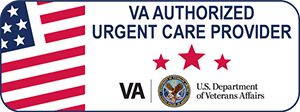What is a laceration?
Lacerations are cuts on the skin. A sharp object, such as a glass or razer produces incisions. Lacerations are blunter and irregular. Not all lacerations need stitches. Therefore, you can care for small lacerations right at home.
Home Care
You can clean small lacerations at home. Just cover them with a clean gauze and tape. However, make sure they fit the following criteria first:
- Bleeding stops right away (within 10 minutes).
- the cut is not on the face (especially on the mouth or near the eyes).
- the cut is small and not very deep (not more than 1/4 inch deep).
If your wound does not fit this description, you might need stitches. Stitches are not only necessary to stop the bleeding, but they also help speed up healing and prevent infections. Your risk of infection increases the longer the wound remains open. Most wounds that require closure should be stitched, stapled or closed with skin adhesives within 6 to 8 hours after the injury. Some wounds that require treatment can be closed as long as 24 hours after the injury.
If you have diabetes, chronic kidney failure or a suppressed immune system, your wounds might not heal as fast or as well as other people, so you might need stitches even if it is a small laceration. When in doubt, come to any of our clinics and speak to our health care providers.
Getting Stitches
Sutures (or stitches) are the most common method used to close up a laceration. Non-dissolvable sutures made of nylon or polypropylene material are used to close the outer layer of wounds. Dissolvable sutures made of polyglycolic and polygalactic acid are used to close deeper layers of skin and tissue.
Signs that a cut requires stitches:
- Deep enough to exposure the yellow subcutaneous fatty tissue, muscle or bone.
- Gaping open so that you can’t easily use gentle pressure to press the edges together.
- Located on or across a joint (concern for damaged nerves, tendons/ligaments).
- The result of an animal or human bite.
- A result of a foreign body impaling the area.
- Made by a high-pressure impact from a projectile like a bullet.
- Contaminated or resulting from a very dirty or rusty object.
- Bleeding profusely.
- On a cosmetically significant area, such as the face, lips, eyelids.
- On or near the genitalia.
You may also need a tetanus vaccine booster.
Removal of Stitches
Most stitches are removed within 10 days and as soon as five days in areas like the face, where the blood supply is rich – which makes healing faster. If you leave stitches in for a long time, there is a higher risk of scarring. Therefore, make sure you keep all doctor’s appointments for your stitches. The main goal of stitches is to help your wound heal, so if they need to stay in place for a longer period of time, the health care provider may choose to do that. Stitches are easy to remove with surgical scissors. After the doctor removes your stitches, they will then examine and clean the area to ensure that it’s healing properly. Although you might be tempted to remove the stitches at home, it’s safer if you return to the clinic for this. It’s easy to re-injure the area – or even cause an infection -if you’re not careful. This will result in a feeling of general illness, and may require antibiotics for you to get well.
Walk-in to any of our clinics and talk to our providers. No appointment is necessary at our clinics and you’ll only wait minutes to be seen. You can call ahead at (917) 310-3371 and let us know you’re on the way or you can check in online.
Sources: CDC, Cleveland Clinic


